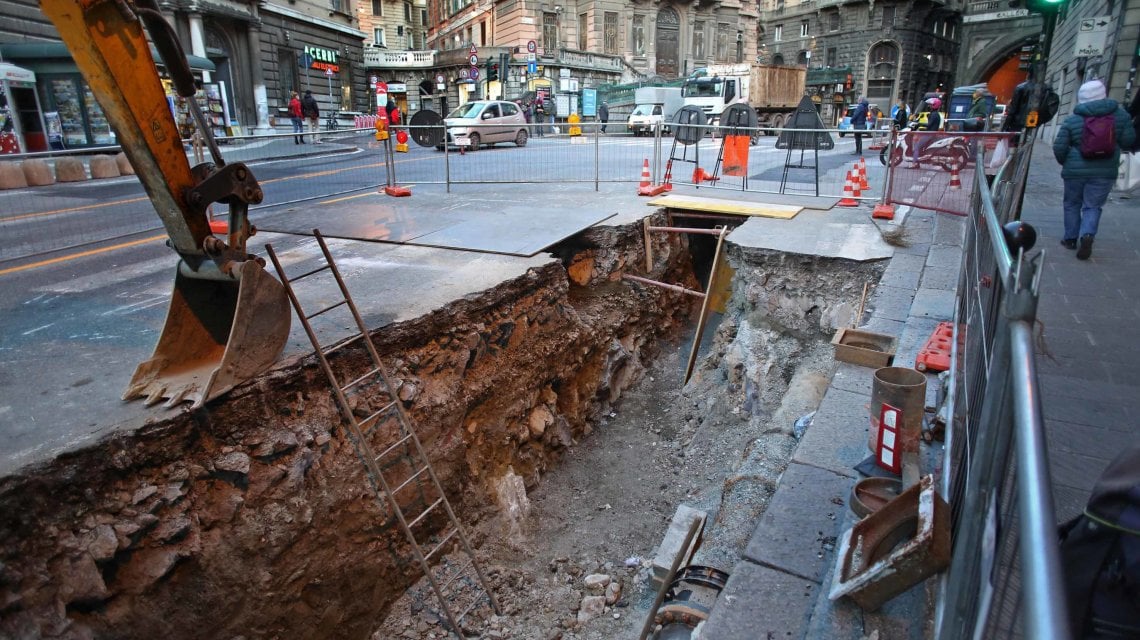Repetto, the archaeologist monitoring the works on the aqueduct stopped the workers when he spotted part of the structure
The Ligurian capital is a wonderful city full of history and surprises. The latest one was uncovered right in its heart. In Largo Zecca, a few hundred meters from the Ancient Port, the bucket of an excavator revealed a portion of the famous Barbarossa Walls. As reported by Repubblica, Iren Group, which manages the local water services, had sent workers to install a new pipe for the aqueduct. However, and thankfully, the local official of the Ligurian superintendence, Luca Trigona, considering the area at risk of historical finds, sent archaeologist Ivan Repetto to oversee the works. He stopped the works and saved the wall portion just in time.
The ancient wall was completed in 1163 to defend the city from the descent of the Holy Roman Emperor, Frederick Barbarossa. During the Middle Ages Genoa greatly expanded and the Roman walls, built in the 9th century, were no longer sufficient to protect the new territories. Thus, the new walls expanded the area contained within to include an area of 55 hectares. While previously the area enclosed between the walls and the coastline was about 22 hectares.
The ancient wall was completed in 1163 to defend the city from the descent of the Holy Roman Emperor, Frederick Barbarossa
Repetto, who is 33 years old, put to good use his archaeology degree from Genoa University and the specialization he acquired in Pisa. He commented: “It doesn’t happen every day to make a finding like this one.” Adding that “The alarm bell was the mortar, one of the most used binders in construction. We were in the presence of a masonry construction and I stopped the workers.” In the now-secured excavation, it is possible to see the red bricks of the water drainage channel and the foundations of the wall. “The portion currently visible is one meter and ten centimeters and indicates a load-bearing structure – continues Repetto – because a city wall obviously had to have characteristics of solidity, being also very high the walls of the time.” Theoretically, continuing with the excavation, it would be possible to follow the wall to the entrance of the Portello tunnel.
Trigona explained that the construction site will resume its work assuring maximum safety for the archaeological finding.
Ilona Catani Scarlett

